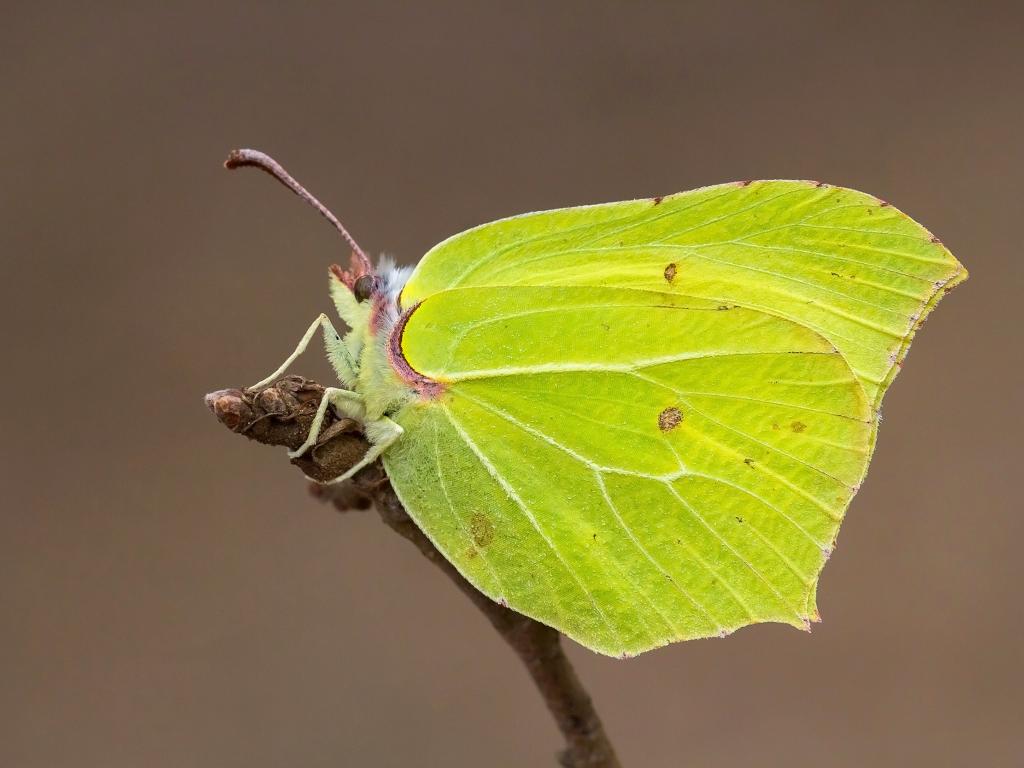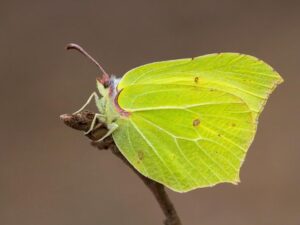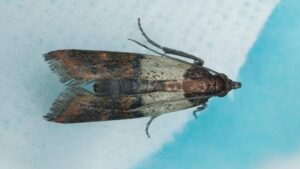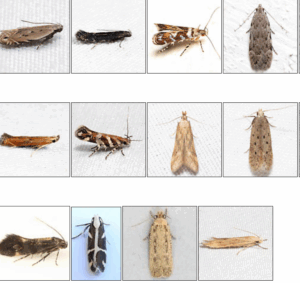Common Brimstone Butterfly: Nature’s Early Spring Messenger:
1. How Rare Is the Brimstone Butterfly?
The Common Brimstone (Gonepteryx rhamni) is a familiar presence across much of Europe, particularly in southern and central regions. In the United Kingdom, it is prevalent in England and Wales but becomes increasingly scarce in Scotland and parts of Ireland. Its distribution closely aligns with the presence of its larval host plants—alder buckthorn (Frangula alnus) and common buckthorn (Rhamnus cathartica)—which thrive in specific habitats such as wetlands and calcareous soils. While not considered rare, the Brimstone’s occurrence is patchy, reflecting the localized availability of these essential plants .
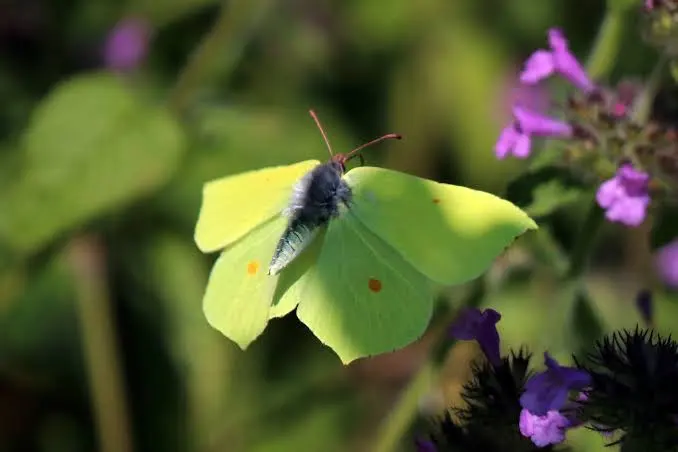
2. What Is the Lifespan of a Common Brimstone?
Remarkably, the Brimstone boasts one of the longest lifespans among butterflies, living up to 13 months in its adult form. This longevity is largely attributed to its ability to hibernate as an adult, a trait shared by only a few butterfly species. Emerging in late summer, adults feed voraciously to build fat reserves before entering a state of diapause during the colder months. They reappear in early spring, often being among the first butterflies seen, as they seek mates and suitable sites for oviposition .
3. What Does the Brimstone Look Like?
The Brimstone is a medium to large butterfly, with a wingspan reaching up to 6 centimeters. It exhibits pronounced sexual dimorphism: males display bright sulphur-yellow wings, while females possess paler, greenish-white wings. Both sexes have leaf-shaped wings with a distinctive orange spot on each, enhancing their camouflage among foliage. This mimicry is so effective that resting Brimstones are often mistaken for leaves, providing them with protection from predators .

4. Where Are Brimstone Butterflies Found?
The Brimstone’s range extends across the Palearctic region, encompassing much of Europe, North Africa, and parts of Asia. Within the UK, they are commonly found in southern England and Wales, frequenting habitats such as woodlands, hedgerows, and gardens. Their presence is closely tied to the availability of their larval food plants, which are often found in wetlands and calcareous soils. Adults are highly mobile and can be seen from early spring, as they emerge from hibernation, through late summer, when the new generation takes flight .
In summary, the Common Brimstone is a widespread and resilient butterfly, notable for its early spring appearance, extended lifespan, and remarkable camouflage. Its dependence on specific host plants underscores the importance of habitat conservation to ensure its continued presence across its range.
The Common Brimstone Butterfly: A Harbinger of Spring and Marvel of Adaptation
It is widely held that the term butterfly originates from “butter-coloured fly,” a reference to the vivid yellow hue of the male Brimstone butterfly. In contrast, the female exhibits a more subdued, whitish-green coloration. The Brimstone’s wings are exquisitely contoured, mirroring the form of a leaf so perfectly that, when at rest or in hibernation among foliage, it becomes virtually indistinguishable from its surroundings.
Unusually among butterflies, the Brimstone overwinters in its adult form, allowing it to spend the majority of its life as a mature butterfly—a rare trait within the Lepidoptera. The species’ distribution is intimately linked to the presence of its larval host plants. In England, the subspecies rhamni is primarily found south of a notional line stretching from Cheshire in the west to South-East Yorkshire in the east, though wanderers may occasionally be encountered beyond this range. In Ireland, represented by the subspecies gravesi, its population is concentrated in a narrow region spanning from West Galway through West and East Mayo, and along a corridor running eastward from County Clare to Kildare.
Frost-Tolerant and Remarkably Long-Lived
The luminous yellow males are a familiar and arresting sight to forest-goers and naturalists alike. Less commonly known, however, is the Brimstone’s extraordinary longevity and its biochemical adaptations that permit survival through harsh winters. The butterfly synthesizes natural antifreeze compounds—glycerol and specific proteins—that protect its tissues during hibernation.
An Emissary of Spring
On sunlit days in February and March, male Brimstones may be seen flitting along forest margins, woodland paths, and garden edges. Their vibrant lemon-yellow wings seem to herald the arrival of spring. Awakened by the first warm rays of the year, these butterflies commence their mating flights—spectacles that may continue into mid-April. Their early emergence has earned them a cherished reputation as messengers of the changing season.
The Intimate Bond Between Brimstone and Buckthorn
Following successful mating, females begin ovipositing in April and May, delicately placing single eggs upon the tender buds of alder buckthorn (Frangula alnus) or common buckthorn (Rhamnus cathartica). These shrubs, both members of the Rhamnus genus, are essential to the Brimstone’s life cycle, as the larvae can only thrive on their foliage.
Newly hatched caterpillars, a shade of leaf-green, are masterfully camouflaged. They rest along the midrib of leaves, virtually invisible to predators. This intimate ecological relationship highlights the critical, often overlooked role of even modest plant species in sustaining biodiversity. Without these shrubs, the Brimstone would vanish from our landscapes.
From Larva to Pupa: A Metamorphic Journey
The larval stage lasts between three and five weeks. After feeding and growing, the caterpillar prepares for pupation on its host shrub. The chrysalis—pale green and leaf-shaped—is suspended by a silk girdle spun by the larva. It remains camouflaged amid the summer greenery, an understated miracle of natural engineering. After 10 to 14 days, the adult butterfly emerges.
The first of the new generation typically takes flight in early July. Curiously, these butterflies often fly for only a brief period—sometimes no more than a week or two—before entering a state of “summer torpor,” a form of dormancy triggered by extreme heat.
Surviving the Winter: A Masterclass in Resilience
As autumn approaches, Brimstones reappear in search of nectar from late-blooming herbs such as thistles, replenishing their energy stores in preparation for hibernation. They then retreat into sheltered crevices—beneath dry leaves, within ivy-covered walls, or among twisted branches. Here, they enter a profound state of dormancy, sustained by their remarkable antifreeze-like compounds.
These physiological adaptations enable them to endure temperatures as low as –20°C without cellular damage. Astonishingly, the Brimstone spends more than two-thirds of its 10- to 12-month life span in this overwintering state. Among native butterflies, it holds the record for longevity.
Conclusion
The Common Brimstone is far more than a splash of early spring color. It is a study in ecological precision and evolutionary innovation—its leaf-shaped wings, biochemical winter armor, and symbiotic relationship with buckthorn all forming a delicate web of survival. As it drifts through woodlands and gardens in late winter, the Brimstone reminds us not only of the season’s renewal but of nature’s quiet complexity. In safeguarding its habitat, we preserve not merely a species but a symbol of resilience and beauty.

